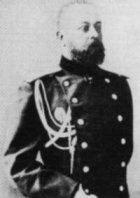
Worksheets and No Prep Teaching Resources
Reading Comprehension Worksheets
World War I

World War I
 Worksheets and No Prep Teaching Resources Reading Comprehension Worksheets World War I |
 World War I |
| edHelper's suggested reading level: | grades 6 to 8 | |
| Flesch-Kincaid grade level: | 8.09 |
|
The Russian Defeat at Tannenberg
By Jane Runyon |

|
 1 When the Germans decided to attack much of Europe to begin a world war, they really didn't think they would have much trouble with Russia. According to the Schlieffen Plan, if the Germans were to take control of France quickly, the British and Russians would not be very willing to continue a battle. They believed that if they were to attack France, it would take six weeks before Russia would be able to mobilize an army to put up any resistance. The plan made a lot of sense on paper. Putting the plan into action would be another story.
1 When the Germans decided to attack much of Europe to begin a world war, they really didn't think they would have much trouble with Russia. According to the Schlieffen Plan, if the Germans were to take control of France quickly, the British and Russians would not be very willing to continue a battle. They believed that if they were to attack France, it would take six weeks before Russia would be able to mobilize an army to put up any resistance. The plan made a lot of sense on paper. Putting the plan into action would be another story. |
Create Weekly Reading Books
Prepare for an entire week at once! |
| Leave your feedback on The Russian Defeat at Tannenberg (use this link if you found an error in the story) |
 |
World War I
|
 |
Social Studies
|
 |
United States
|
|
|
|
|
 | Fifty States Theme Unit |
 |
Document Based Activities |